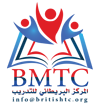Decision Analysis for Operation & Maintenance Professionals
Why Choose this Training Course?
This course examines techniques for decision analysis with emphasis on prioritization and the decision making process to be carried out by Operation & Maintenance Professionals. Decision-making is the most central human activity, intrinsic in our biology and done both consciously and unconsciously. We need it to survive. Taking a decision is not just a question of selecting the best alternative. Often one needs to prioritise all the alternatives for resource allocation among a portfolio of option, or to examine the effect of changes introduced to initial judgments. We need to set priorities on these solutions according to their effectiveness by considering their benefits, costs, risks, and opportunities, and the resources they need.
This course will feature:
- Breaking a problem down into its constituent parts or components, in the framework of a hierarchy
- Establishing importance or priority to rank the alternatives is a comprehensive & general way to look at the problem in a formal manner
- Application of multi criteria decision-making (MCDM) to practical problems
- Introduction to different operational research & management science methods
- Enhance decision-making with goals and criteria & show how to measure and rank them
What are the Goals?
By the end of this course, participants will be able to:
- Improve productivity through use of better, timelier information
- Understand how world-class organisations solve common asset management problems
- Optimise planning and scheduling resources, carry out optimised failure analyses
- Optimise asset management budgets by avoidance of unplanned equipment failures in service
- Develop a practical approach of an action plan to utilise these technologies in their own areas of responsibility
Who is this Training Course for?
This course is suitable to a wide range of technical professionals but will greatly benefit:
- Operation and Maintenance Professionals
- Key Operations Supervisors
- Internal Improvement Consultants
How will this Training Course be Presented?
This course will utilise a variety of proven adult learning techniques to ensure maximum understanding, comprehension and retention of the information presented. This includes hands-on, stimulating experience and using interactive user friendly decision analysis software. The course is highly interactive with many discussion and facilitated practice sessions. Key points will be emphasised with case study examples. There will be a combination of presentation sessions and workshops during in this course.
The Course Content
Day One: Introduction to Decision Making
- Scope and significance of decisions
- The Decision making process
- The concept of best practice through learning from worst practice
- Introduction to reliability and Weibull analysis
- Case Studies and Group Exercises
Day Two: Implementing Multiple Criteria Decision Analysis using the Analytic Hierarchy Process (AHP)
- Definition of Decision Analysis
- How, and Why, Bad Decisions are Made
- Guidelines for Good Decision Analysis
- What is AHP?
- Benefit/Cost Analysis
- Resources Allocation
Day Three: Risk Management through Failure Mode & Effect Analysis (FMEA)
- Fault Tree Analysis
- Risk Priority Number
- The Criticality Matrix
- Modelling Reliability of Systems
- Series and Parallel Systems
- The Redundancy Concept
Day Four: MRP and ERP Systems
- What is ERP and how did it develop
- What is MRP System
- The Bill of Materials
- Master Production Schedule
- Practical Examples
- Case Studies and Group Exercises
Day Five: Decision Analysis for Optimisation of Maintenance Activities
- How to get the most of your CMMS?
- Benefits that can result from CMMS
- Optimum Decisions for Maintenance Policies
- Key Features of Next Generation Maintenance Systems
- How to transform Data to Decisions
- Examples of Approaches and Case Studies

